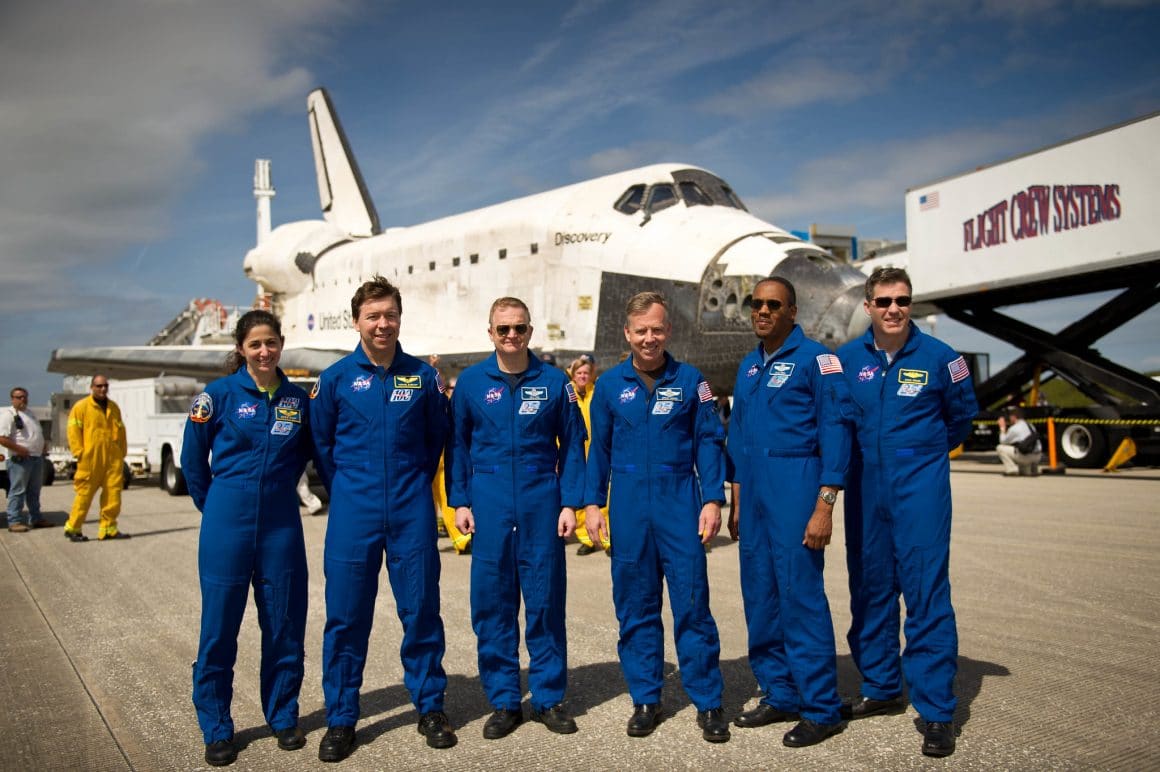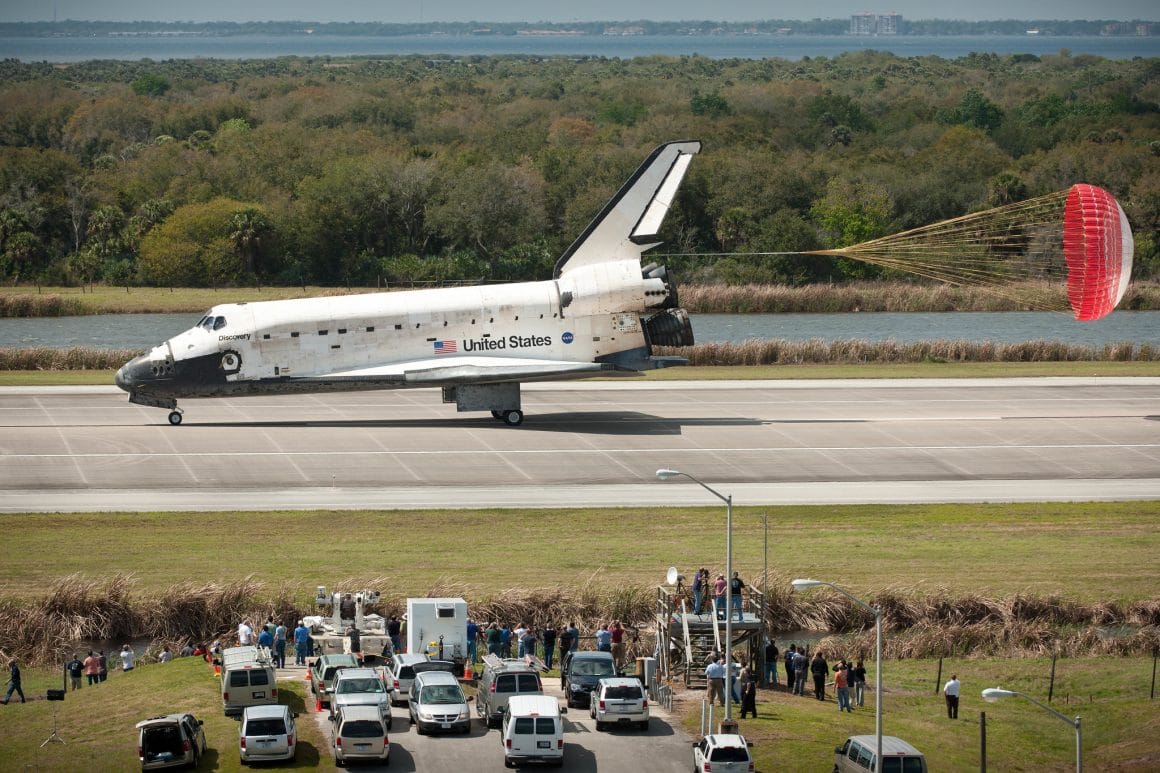CAPE CANAVERAL, Fla. — NASA astronaut Col. Eric A. Boe, who piloted the final flight of space shuttle Discovery ten years ago this week, recalls the exciting 13-day mission to service the International Space Station.
The 133rd space shuttle flight delivered tons of supplies, including water and oxygen, to the orbital laboratory in February and March 2011. Discovery’s six-person crew also left the Leonardo multi-purpose module docked to the station.

On March 9, 2011, Boe and mission commander Steven Lindsay piloted Discovery to a safe landing at the Kennedy Space Center. In total, Discovery spent a combined 365 days in space; orbited the Earth 5,830 times, and traveled a distance of 148,221,675 miles during 39 flights.
In an exclusive interview with this aerospace journalist, the former U.S. Air Force fighter and test pilot discusses his feelings related to the space flight. From the emotions of the mission to his piloting time around the space station.
Eric A. Boe: From a CAP Student to NASA Astronaut
Eric Boe’s career in aviation began as he joined the Civil Air Patrol which is an auxiliary of the Air Force. This took Eric toward earning his pilot’s license and his first solo at age 16.
Col. Eric Boe: “For me I was always interested in aviation. I’m the person when I’m out there and I hear some noise in the sky whether it’s a bird or an airplane I’m looking up there checking it out,” Boe explained with a smile as we began.
“I was very interested in the military and wanted to be a military pilot and Civil Air Patrol was a chance to see those things. I decided to go to the Air Force academy, and CAP was a good place to start.”

Charles A Atkeison: Moments before boarding Discovery all of us smiled during your crew huddle at the base of the launch pad just hours before lift-off.
Col. Boe: “We had a huddle as a team, we just said a quick prayer, and just said looking forward to the mission, and let us do well. It was a good way to get ready for the mission and to give us some focus before we get on the rocket to go.”
The Role of a Space Shuttle Pilot
Charles: During the launch, discuss what the pilot is doing during the ascent.
Col. Boe: “The pilot is basically operating all the major systems that are on the shuttle. The main engines. I have the switches for shutdown the engines, starting the engines; (switches) for any type of leaks or any other thing. I monitor the systems for the main engines as we go up hill. Also, all the electrical power switches that we have on one side. Auxiliary power units actually provide all the hydraulic power to basically move the engines bells on ascent.
We actually move the flight control surfaces to do what we call load relief, but as you’re going through the atmosphere, because the wings of the shuttle are producing lift because the wind forces blowing on them, we actually move the flight control surfaces as we’re going uphill.”
Charles: Share with me your feeling of the Cupola node (aboard the space station). I’m a big fan of the Cupola, you have a big 360-degree field of space… Is it a man-cave? How would you describe it?
Col. Boe: “Yes, that’s a good way to describe it. It’s an awesome facility to see. The 360-degree field of view, you can’t say enough good things about it. One of the things it really helps us do is we do a lot of robotics and spacewalks, and we can set it up to watch through a window.

One of the things that great view gives us is the ability to move that (station’s) arm around and grab things. And, then a secondary benefit of that is when you have some free time, we have a gym there that’s right below it and when no one is in front of you you can actually work out and be looking out and see the planet — it’s such an amazing view.”
Charles: What types of music did you bring on board?
Col. Boe: “I brought up a wide selection, I have a a whole bunch of varied songs… I guess, I probably grew up in the 80’s, so I have a lot of 80’s kind of rock, I have some newer stuff as well. Just a wide variety of different kinds of music. It’s very nice at the end of the day. You get a little bit of wind-down time as you’re getting ready to sleep. So a lot of people as they’re winding down in their sleeping bag usually put their ear phones in and listen to a little bit of music.”
Charles: Now after undocking from space station, you had your chance to fly Discovery around the outpost before heading home. What was on your mind as you navigate what I like to call the ‘White Dove’ on the ocean of space?
Col. Boe: (Laughs) “I haven’t heard that term, the White Dove, that’s good, well put. The (station) is amazingly big. We were actually — when we were docked — probably the biggest the space station was going to be in the near future. We had the space shuttle up there, and we had the ATV European vehicle, we had the Japanese HTV which we reached out and grapple with. And, we attached the last module that’s going on the space station in the near future.
- The Crash of Eastern Air Lines Flight 212
- Flying Tiger Shot Down in 1943 Finally Returns Home
- No MELs, No Delays: How Santa’s Sleigh Keeps Flying Year After Magical Year
- Coulson Aviation 767 Set to Join Fleet as Wildfire Airtanker Fleets Face a Reckoning
- John Wayne Airport “Fly Friendly” Program Proves Airports Can Be Good Neighbors
And, we also had the Russian vehicles. And, as we’re flying around we take the vehicle out. Discovery flies just a dream, she’s a dream ship — the dream machine is the way I like to say. (She) flies very well, very responsive when you put in the controls.
The one thing you can’t really reproduce on the ground is the ‘boom’ of the reaction control system jets, it’s such a deep bass… It’s a good chance to also survey the vehicle.”

Charles: Was the fly around one of your toughest challenges as a pilot?
Col. Boe: “We train over and over again so by the time you do it you feel very comfortable doing it. There’s some work involved like most of the tasks on board there very do able… There’s the challenge you want to do the best you can do… it’s a task you can do it in your sleep is how I like to say it.”
Charles: Thank-you.
Today, Discovery remains on public display at the Smithsonian’s Steven F. Udvar-Hazy Center in Dulles, Virginia. Eric Boe remains a critical part of the astronaut corps based at the Johnson Space Center near Houston.
(Charles A Atkeison reports on aerospace and technology. Follow his updates via social media @Military_Flight.)
